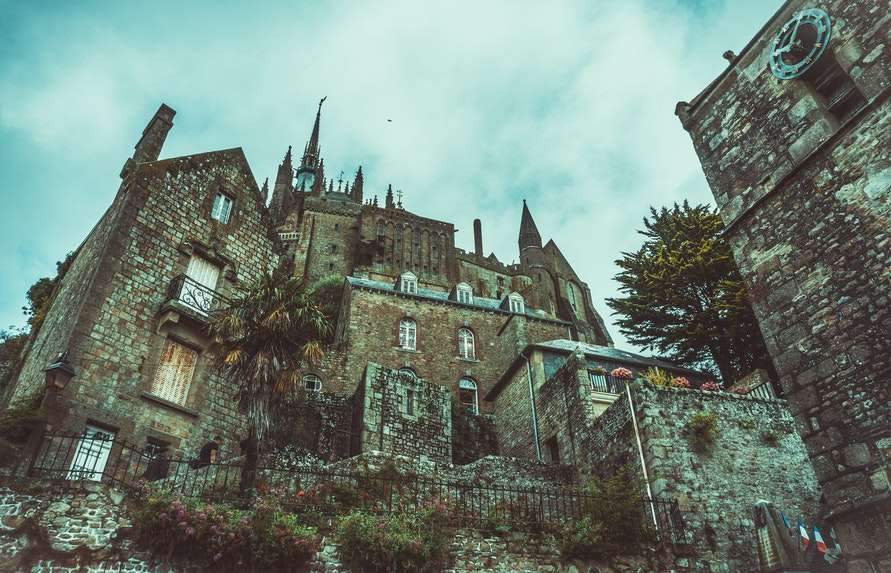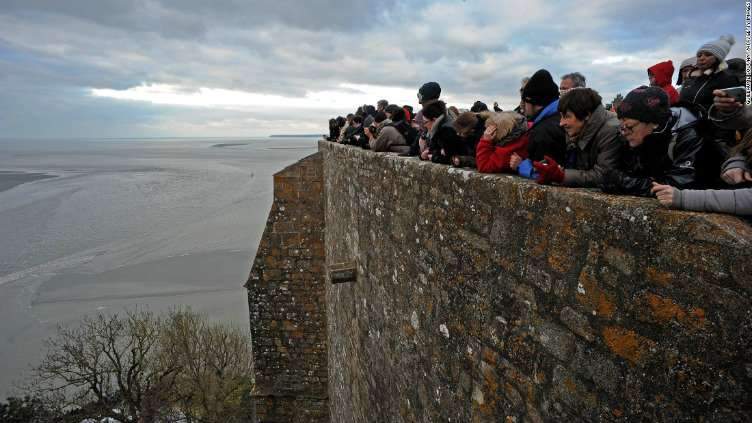Architectural design at Mount Saint Michael
,Architectural design at Mount Saint Michael
Mount Saint-Michel is a small island town, nicknamed “Le Mont-Saint-Michel”, with an area of 240 acres.
The island, which is located off the coast of Normandy, has a rich history and culture and is one of the most famous tourist sites in France.
Its imposing location has long captivated visitors, and this mountain became a major Christian pilgrimage site in the early 8th century.
Now the sheer visual appeal of Mont Saint-Michel makes it a must-visit in France.
The place, 290 km from Paris, receives 3.5 million visitors annually.
Place of worship
The site was registered a UNESCO World Heritage Site in 1979, and over time,
the abbey of Mont-Saint-Michel became a center of pilgrimage, prayer and devotion.
The Benedictine monks who had been there since 966,
together with the translated texts of Aristotle and the relics of Saint Michael, attracted followers of the Spiritualists.
The abbey became a target due to Mont-Saint-Michel’s strategic location,
and the abbey’s expansions were timed to coincide with the strengthening of the island’s defenses.

The birth of Mont Saint-Michel
Mont occupied dry land during prehistoric times, and is nowadays a tidal island.
After sea level rise, erosion shaped the current coastal landscape,
and several granite outcrops appeared in the bay, having resisted ocean erosion better than the surrounding rocks.
Architectural design at Mount Saint Michael
These included Mont Dol, Tombelaine, and Mont Tombe.
The original name of this municipality was “Mont Tombe”, and its story began when “Saint Hubert”,
Bishop of Avranches, saw the Archangel Michael.
He established Mont-Saint-Michel in 708, then decided to build a chapel in honor of the divine figure, after the third and final vision.
Then the bishop of Avranches sent two religious officials to search for the remains of Saint Michael,
and they brought a fragment of a wall and a red cape, as well as a piece of marble on which the Archangel had set his foot.
The castle was completed in 1521 AD, after several centuries of construction.

Mont Saint Michel restoration
In 1922 the places of worship were restored, but the pilgrimage was not repeated until 1966,
when the monastery celebrated its thousandth anniversary.
The improvements were then supervised by the French government, and the current owners of the monastery.
In 1879, a road was built over a bridge to facilitate access for pilgrims,
the car park was demolished and a colonnaded entrance appeared.
Allowing the waters of the English Channel to flow freely, the old route is gradually being undermined by the ingress of water.
The biggest challenge today is to continue to grant access to the abbey to 3,500,00 visitors each year,
since 1862, Mont Saint-Michel has been registered as a National Historic Monument.
There was an old church dating back to 1144 AD, before the construction of the castle,
and hundreds of monks who were detained from the English during the war with France,
which is called the Hundred Years War, lived in it.
Mont Saint-Michel, unlike all French castles built primarily for defensive purposes,
was built in order to serve as a monastery.

Use of the building as a prison and correctional institution
During the reign of King Louis XI, it was converted into a correctional institution and housed inmates until 1860.
During the French Revolution, dissidents were imprisoned in monastery cells,
then 650 prisoners were taken to the Continent when the prison closed a century later due to the Imperial Mandate.
After many people, including Victor Hugo, an ardent supporter of the monastery, called for the prison to be closed.
Castle developments
The gardens have recently been moved away from the beach,
to keep the castle of Mont-Saint-Michel in a private area, and the island is also connected to the mainland by a causeway,
which is reached by buses from Rennes and Pontorson.
During the islanding process, the sandy and muddy side is visible for the possibility of access on foot,
but tourists are advised not to cross due to the dangers caused by the strong tides.
A visit to the Mont-Saint-Michel castle is an interesting visit, given the beauty of the medieval walls.
And also, to see how strong the fortifications were, while enjoying the small village of less than 100 citizens,
which contains streets lined with parks, museums, shops and hotels.
There is a large group of cafes and restaurants at the base of the old monastery.






